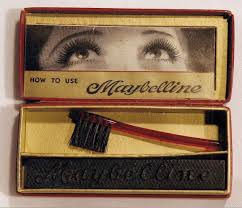The Book of my Heart
- Jill Barry

- Jan 9, 2020
- 3 min read
Updated: Dec 31, 2020
If you’re an author, a very good way of forgetting what’s happening in the world is to sit down and write. Whether you prefer matching attractive heroes with gorgeous heroines, or sending fictional baddies into the wide blue yonder, escaping into an imaginary realm of one’s own making can be as satisfying as reading an absorbing novel, watching a spellbinding film . . . or tearing into a box of your favourite chocs? Anyway, having decided to begin 2021 with a much-overdue new blog post, I’d like to share my reasons for writing the book which has taken me the best part of two years to complete.
Yes, the novel in question is ‘the book of my heart.’ Writers often use this expression to describe a story they feel they’re meant to write, or that they’d love to write if only they had time. Often the compulsion to get the words into that big fat notepad or on to the computer fades as other projects demand attention. This might be anything from the sequel to a newly-published novel, to the uneasy feeling that this much-awaited (by the author) manuscript mightn’t be what the market is waiting for. The action takes place mainly in 1943/44 so gas masks figure in the story, though I don't bang on about them . . .

In my case, I had the green light to write a historical pocket novel, having pitched the idea to my D C Thomson editor. The reason I prioritised this project is a story in itself and it’ll probably turn up on here as publication day looms! There’s another idea simmering, but though my editor has approved it, I daren’t even try out character names until the ‘big book’ is ready for submission.
What made me so determined to complete this project? As a child I hero-worshipped a much older cousin who was blonde and glamorous and who even used a magical item she called mascara. Before leaving the house, my mum would dab on some Velouty powder cream and apply a touch of Yardley pink lipstick.


Needless to say, I found my cousin's make up much more fascinating, though I never did get my hands on her mascara!

She taught us younger ones how to dance The Palais Glide and we taught her how to jive. She was (shock, horror) divorced, something only whispered about back then and though the occasional boyfriend would make an appearance, she never remarried. Apparently, my cousin’s ex-husband was a very charming rascal – as is my fictional Charles. Like my cousin, my heroine, Anna also has a seafaring Norwegian father and spent her childhood seeing him come home on leave, laden with gifts, this followed in due course by another departure and long absence at sea.
Of course, I’ve written a work of fiction, but I’ve drawn on some of my cousin’s experiences and family members’ anecdotes. I’ve used my hometown as the setting although some of the action takes place in Bari, Italy, where my cousin’s then Army husband was stationed. My cousin travelled from Barry to Bari to spend time with him and would talk about the hotel where he had his quarters, and about the German Prisoner of War who I think was acting as a batman or servant. Another world indeed . . .
Most events depicted in my novel are a mix of fact and fiction, although the horrific bombing which took place at Bari’s dockyard really did happen. In my mind’s eye, I can picture my heroine’s workplace overlooking the docks. I accompany her on her way to work or when she walks to Barry Island with a boyfriend. I too enjoyed visits to the ice-cream parlour where she demolishes a ‘North Pole’ – a double vanilla ice cream wafer topped with raspberry sauce. I’ve also danced at The Memo – the memorial hall where Anna performs a nifty Jitterbug or sways to the haunting sounds of Glenn Miller’s Moonlight Serenade. The seaside town of Penarth is also somewhere she visits.
Below is the square where Anna has a rendezvous with a handsome Army Officer but I shan't give any spoilers!

So many kind people have expressed their wish to read this story, but it needs a little more work yet. Its title took a long time to arrive, but I think it captures the events in three little words. Hopefully, my late cousin would have approved.





I'm fascinated by the 1920s, fashion and old photographs. So this post has everything. Thanks Jill. I'm always pleased to have confirmation of my contention that 1920s skirts were NOT commonly (or ever?) worn above the knee!
A very interesting post, Jill. I loved looking at the images. The 1920s was an era of change and challenges especially for women. The beginning of a decade always seems very special, I think.